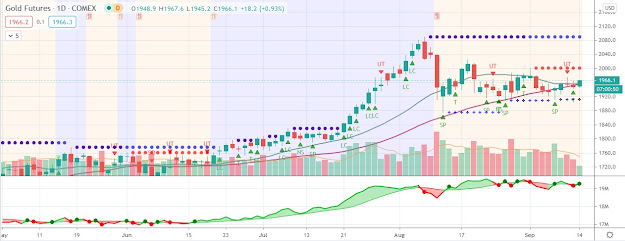The great danger for the gold price is the stronger dollar
The gold price turned lower on Monday as a further escalation of
European sovereign debt fears fueled widespread selling across financial
markets. The price of gold
fell to as low as $1,562.08 per ounce earlier this morning, but pared
its losses to trade down by $12.89, or 0.8%, at $1,571.59. In doing so,
the gold price considerably outperformed other commodities and U.S.
dollar-denominated asset classes.
Equity markets across Asia and Europe exhibited a sea of red as well on Monday as speculation grew that Spain may need a more comprehensive bailout after a second region, Murcia, revealed that it needs additional financial assistance. This followed reports last week that another region, Valencia, was also in dire financial straits.
“The fear now is that Valencia’s aid request is more than likely to open the floodgates for similar requests from the other 17 heavily indebted Spanish regions,” CMC Markets wrote in a note to clients. “Already speculation is increasing that Catalonia, or any one of a number of regions will be next. When that happens it will be pretty much nailed on that the Spanish government will then eventually need a bailout itself, stretching the funds of the EFSF to its limits.”
As for Greece, the International Monetary Fund (IMF) indicated over the weekend that it will not provide further financial aid to the nation. German news magazine, Der Spiegel, cited European Union officials who spoke on conditions of anonymity that it is “already clear” that Greece will not meet various financial targets necessary to receive additional assistance.
The combination of turmoil in Spain and Greece provided a significant headwind for the euro currency and led to safe haven buying in the U.S. dollar. As for the implications for gold, Commerzbank analyst Eugen Weinberg contended on Monday that “The great danger for the gold price is the stronger dollar, because of its long-term negative correlation to gold. That’s definitely still dampening the interest of investors from the United States.”
However, Weinberg also noted that “In euro terms, gold is trading near six-month highs, so it’s not as bad as it first looks. It’s more about dollar strength than gold weakness. It’s difficult to see the pressure coming off (the euro). But as long as (gold) prices stay above $1,530, they are still in a stabilisation phase.”
Equity markets across Asia and Europe exhibited a sea of red as well on Monday as speculation grew that Spain may need a more comprehensive bailout after a second region, Murcia, revealed that it needs additional financial assistance. This followed reports last week that another region, Valencia, was also in dire financial straits.
“The fear now is that Valencia’s aid request is more than likely to open the floodgates for similar requests from the other 17 heavily indebted Spanish regions,” CMC Markets wrote in a note to clients. “Already speculation is increasing that Catalonia, or any one of a number of regions will be next. When that happens it will be pretty much nailed on that the Spanish government will then eventually need a bailout itself, stretching the funds of the EFSF to its limits.”
As for Greece, the International Monetary Fund (IMF) indicated over the weekend that it will not provide further financial aid to the nation. German news magazine, Der Spiegel, cited European Union officials who spoke on conditions of anonymity that it is “already clear” that Greece will not meet various financial targets necessary to receive additional assistance.
The combination of turmoil in Spain and Greece provided a significant headwind for the euro currency and led to safe haven buying in the U.S. dollar. As for the implications for gold, Commerzbank analyst Eugen Weinberg contended on Monday that “The great danger for the gold price is the stronger dollar, because of its long-term negative correlation to gold. That’s definitely still dampening the interest of investors from the United States.”
However, Weinberg also noted that “In euro terms, gold is trading near six-month highs, so it’s not as bad as it first looks. It’s more about dollar strength than gold weakness. It’s difficult to see the pressure coming off (the euro). But as long as (gold) prices stay above $1,530, they are still in a stabilisation phase.”




Comments
Post a Comment